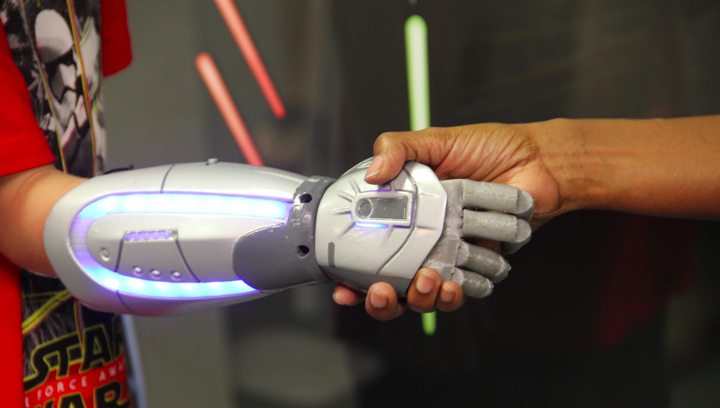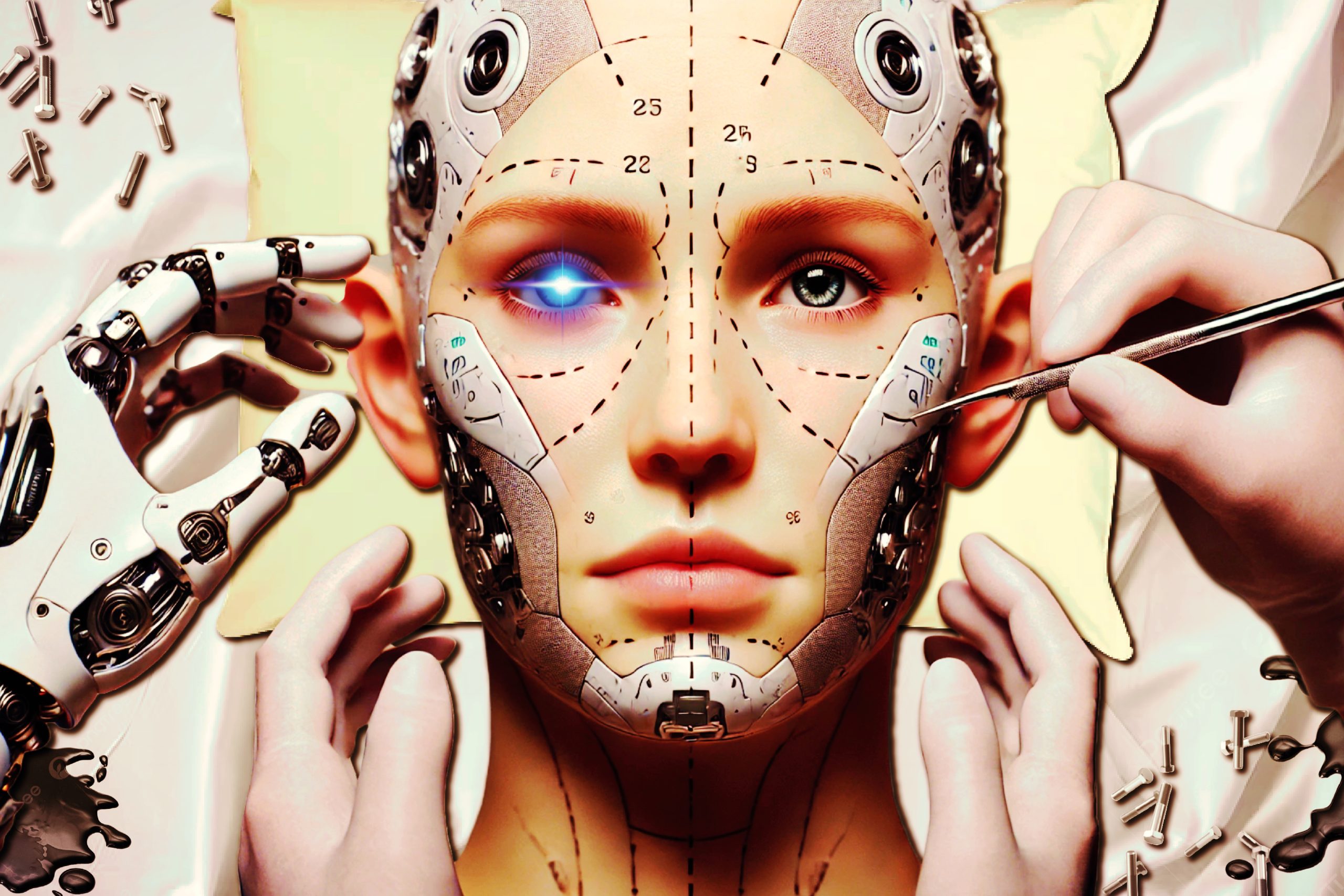There was a time when the word “cyborg” only belonged in the pages of sci-fi novels and big-screen blockbusters. Bionic arms, glowing blue eyes, and robo-voices spitting out lines like, “I’ll be back.” We pictured a future full of Six Million Dollar Men and Terminators. But here’s the twist—what once seemed like a futuristic fantasy (or nightmare, depending on your mood I guess) is now becoming our reality. And here’s the shocker: you don’t need to be a Jeff Bezos-type billionaire with a yacht to be part of it.
That’s right—human augmentation isn’t reserved for billionaires in space suits. Everyday people are getting access to tech that enhances their bodies and minds in ways we couldn’t have imagined just a few decades ago. From neural implants that let you control machines with your thoughts to prosthetics that move just like your own limbs, in today’s new high tech world we’re stepping into an era of augmented humanity.
But let’s not get too far ahead of ourselves—this isn’t just about shiny gadgets or big ego boosts. It’s about redefining what it means to be a human being in the 21st century. And whether that excites you or sends a shiver down your spine depends on where you stand. So, buckle up, because we’re diving headfirst into the world of human augmentation, where the lines between human and machine are about to get seriously blurred.
First things first: human augmentation is not just the stuff of sci-fi. It’s happening, right here, right now. In the past few years, companies like Neuralink (hello, Elon Musk) have been pushing the boundaries of what’s possible with brain-computer interfaces. Neuralink’s goal is to develop devices that allow people to control computers, phones, and even prosthetic limbs with their thoughts. Imagine thinking about turning on your phone, and boom—it’s done. This isn’t the future—it’s the present.
How does something like that work? Very carefully—after all, we’re talking about your brain here. But hey, give it a decade, and you’ll probably have Nabisco running ads in your head while you’re just trying to catch some sleep. Sweet dreams, right? Literally.
But brain implants? That’s just the tip of the iceberg. We’ve been dipping our toes into human augmentation for years now, thanks to prosthetics and wearable tech. Take prosthetic limbs, for example. We’ve reached a point where bionic arms and legs can be controlled by the user’s thoughts through neural implants, giving amputees almost full functionality. And the best part? You don’t have to be swimming in billionaire money to get in on this. Companies like Open Bionics are making prosthetics more accessible and affordable than ever before.
And if you think augmentation is limited to people with medical conditions, think again. Wearable tech like exoskeletons is being developed for construction workers, athletes, and even the military to enhance physical capabilities. In fact, full-body exoskeletons are already being used to allow paralyzed people to walk again.
We’ve already established this tech isn’t just for the rich and famous, but it’s worth saying again. While some of the more cutting-edge stuff, like advanced neural implants, might still come with a hefty price tag, the truth is, human augmentation is already making its way into the everyday world. The future is closer than you think, and it’s not just for billionaires.
Take prosthetics, for example. The cost of bionic limbs has dropped dramatically in recent years, with companies like Hero Arm making affordable, 3D-printed prosthetics that are functional, stylish, and even customizable with superhero designs (because who doesn’t want to be a superhero?). We’re witnessing a shift where augmentative technology is becoming more accessible to everyday people, not just the elite.

Another key player is Wearable technology. From smartwatches that track your every heartbeat to fitness trackers that coach you through workouts, wearable tech is the everyday man’s first step into the world of augmentation. These are gadgets that enhance our bodies and provide real-time feedback on health, performance, and overall well-being. And the next frontier? Exoskeletons that are lightweight, affordable, and designed for everyday tasks like lifting, walking, or even improving posture. The future of augmentation isn’t reserved for the one-percenters—it’s coming for all of us.
And what about replacing traditional, old-fashioned plastic surgery, or at the very least enhancing it. The days of Botox and facelifts could be numbered as cyborg technology begins to edge out the more common cosmetic procedures. Why settle for temporary fixes or invasive surgeries when you could opt for permanent, tech-driven enhancements? Imagine implants that naturally tighten skin, or microchips that regulate muscle tone, giving you that youthful glow without the constant maintenance. Forget about booking another filler appointment—this is the future, where anti-aging is less about needles and more about nano-tech. It’s the kind of upgrade that makes yesterday’s beauty trends seem downright primitive. Even now, 3D technology is making massive strides in the world of facial plastic surgery.
Of course, with great power comes great responsibility (thanks, Uncle Ben). The rise of human augmentation raises a laundry list of ethical questions, and it’d be reckless not to address some of them. If we can enhance the human body and mind, should we? Where do we draw the line between necessary augmentation, like prosthetics for amputees, and enhancements purely for the sake of enhancement?
One major concern is accessibility. While we’ve seen costs drop for things like prosthetics and wearables, more advanced augmentations—like brain implants and gene editing—are still likely to be out of reach for most people. This could create a world where the rich not only have more money but also physically and mentally superior capabilities. Are we heading for a future where the wealthy can literally buy their way into being smarter, stronger, and faster than the rest of us?
And then there’s the fear of dehumanization. When do we cross the line between human and machine? After all, isn’t our humanity tied to our flaws—our physical quirks, our emotional ups and downs, even our mortality? If we start upgrading ourselves, do we risk losing that spark, that essence? Or, as some would argue, do we evolve into something even better? It’s a tricky balancing act, and the ethical questions it raises are massive. Let’s look at some of the pros and cons associated to these new technologies:
Pro: The most obvious benefit of human augmentation is the potential to overcome physical and mental limitations. Prosthetics and exoskeletons have already given people back their mobility, while brain-computer interfaces could one day cure paralysis or restore sight. Scientific American has published articles highlighting the massive strides being made in neural implants and their potential to revolutionize healthcare.
Con: However, there’s a flip side. The psychological toll of augmentation isn’t something we can ignore. Studies show that people with prosthetics or other augmentations can feel a sense of alienation or “otherness.” As we move toward more integrated technology, will people feel less connected to their own bodies? Will we lose touch with what it means to be human?
Pro: Augmentation also opens up endless possibilities for enhancement. Imagine a world where brain implants allow us to learn new languages instantly, or where exoskeletons make manual labor safer and more efficient. The possibilities are thrilling.
Con: But at what cost? The potential for cybernetic hacking is a real concern. Brain implants that control machines could, in theory, be hacked or manipulated. The idea of having someone tamper with your thoughts or movements sounds like a Black Mirror episode, but it’s a real risk in a world of connected devices.
Now that we’ve solved that little quandary, let’s dive into something even more philosophical: how is human augmentation any different from the ways we’ve already been changing our looks and perceptions? We’ve been tweaking our bodies for centuries—cosmetic surgery, makeup, tattoos, you name it. But human augmentation is a whole new ballgame. Unlike makeup or surgery, which just changes how the world sees us, augmentation has the power to change who we are. This isn’t just about looking better—it’s about being better, faster, smarter. So, now, we’re not just enhancing appearances; we’re upgrading abilities in ways that go way beyond just a nip, tuck, or contour here and there. And this shift from perception to performance raises some serious questions about identity and self-worth. When we can enhance our physical and mental capabilities, what does it even mean to be “good enough” anymore? How do we define “excellence” moving forward?
There’s so much to think about, but here’s at least one of the biggest the bottom lines: human augmentation is here, and it’s reshaping what it means to be human. Whether you’re ready to embrace the cyborg within or worried about the ethical and societal consequences, there’s no denying that we’re standing at the threshold of a new era. The real question is—where do we go from here?
Well, for starters, as we march toward a future where man and machine become one, it’s important to remember that while technology can enhance our bodies, it’s the flawed, goofy, and imperfect human spirit that makes us who we are. Augmentation shouldn’t be about achieving perfection—it should be about expanding our potential while staying grounded in what makes us human: our flaws, our emotions, and our connections to each other. Because at the end of the day, whether we’re augmented or not, it’s not the tech that defines us—it’s our heart and soul.







Damn this.